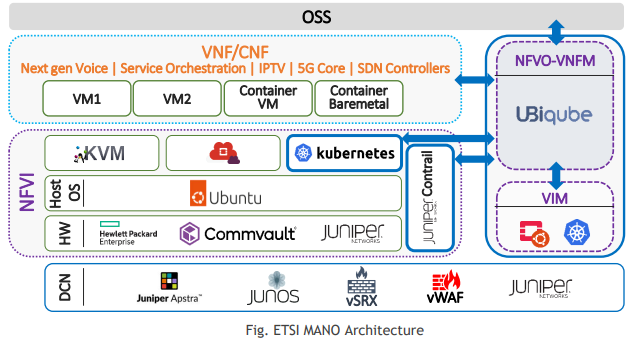About the customer
A major digital infrastructure provider and tier-1 telecom operator in Malaysia
Challenge
The telco needed to prepare its end-to-end cloud infrastructure to advance digital transformation and address unpredictable demand for telecommunication services. It introduced Software Defined Network (SDN) and Network Functions Virtualization (NFV) to facilitate network convergence and digitization.
Although SDN prefers an open architecture over proprietary hardware and NFV enables service deployment while controlling costs, it also introduces complexities. The operator needed the necessary capabilities to operationalize SDN/NFV and launch them on time.
Solution
- Automation-first approach for quicker time to market
TCTS implemented the ETSI-compliant MANO platform to manage the on-premises infrastructure. Furthermore, TCTS installed a network automation platform that offers end-to-end virtualization service capabilities. It enabled the transition from traditional functions to cloud-native and virtualized environments using VNF and CNF onboarding services by integrating key components of the telco cloud (compute, storage, data center fabric and cloud OS).This made it easier and faster for the telco to roll out new services such as next-gen voice and data services. Spinning up new virtualized services reduced the deployment time, significantly improving business agility.
- Single pane of glass to monitor the NFV environment
TCTS provided a consolidated view of the NFV infrastructure by developing a custom dashboarding and alarm monitoring system for storage, VNF, cloud OS, compute, and VIM by leveraging cloud APIs and protocols (SNMP and REST APIs). It helped the staff keep track of all components and make informed decisions. TCTS leveraged RESTful APIs for integrating the virtual environment and OSS to enable quick interworking with the telco’s existing NG-OSS. - Implementing security best practices
The transition from old hardware-based infrastructure to software-based virtual networks, increased the organization’s attack surface, making it vulnerable to cyber-attacks. The TCTS cyber security team recommended best practices and guidelines to optimize security capabilities.
Results
- 40% of time saved on manual, repetitive tasks
- 2X faster network rollout
- >99% high availability of services during the rollout











